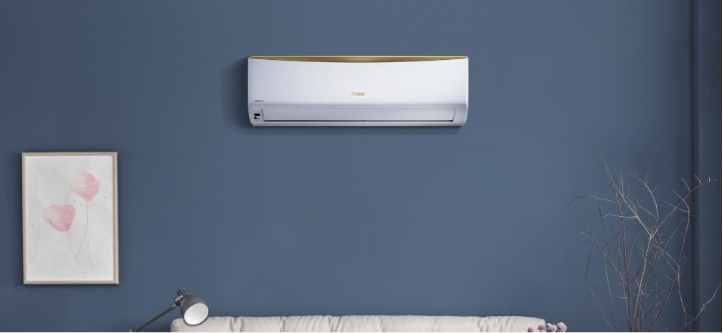When you invest in an air conditioner, you likely look for the best. You may buy the best 2-ton AC for your home and then wonder how to keep it as good as new for a long, long time. To help you keep your air conditioner as good as new, we have put together some information that you need to keep it clean and healthy and, therefore, function well for a long time!
What’s the best way to go about air conditioning maintenance?
The maintenance of an air conditioner is a must to ensure the device’s effectiveness and correct operation. System performance may be harmed if care is not performed regularly. In the end, you risk overusing electricity and prematurely wearing out your air conditioner.
It is estimated that 95 percent of air conditioners, air-air heat pumps, and reversible air conditioning units are significantly blocked, leading to legionnaire’s disease, staphylococcus aureus, allergies, asthma, and other health issues.
There are several pretty basic steps you can do to extend the life of your air conditioner and save money on energy. This article will walk you through the necessary procedures for proper air conditioning maintenance.
What is the best way to clean your air conditioner?
Cleaning the air filters is the first step in air conditioner maintenance. Replace the air conditioning air filters if they’re dirty. They collect dust and pollen, which can serve as a breeding ground for dust mites. The air conditioning system contains many particles in suspension by agitating the room’s ambient air.
Air conditioners, for example, may produce up to eight times the volume of air in a room every hour. During the season of use, which is usually in the summer, these few acts should be performed every two weeks. These few primary stages in air conditioning maintenance allow you to inspect and maybe replace the air filters.
1- Open the air conditioner’s trunk.
Your air conditioning inside the unit must be conveniently accessible to do this operation. Remember to turn off or disconnect your air conditioning before performing maintenance as a precaution.
Swing up the front panel of the air conditioner to open it. This operation does not necessitate the use of any tools. When the hood is opened, the air filters are immediately accessible.
2- Remove the air filters from the system.
The air filters can be readily removed by unclipping them from their base. There are no special tools necessary. Depending on the air conditioning model, the filters might be flat or curved. In-house air conditioners are generally curved to match the unit’s maximum curvature.
3- Keep the air filter clean.
Tap your air filters gently over a trash bin to remove any dust fluff accumulated on the grilles. Then, using a vacuum cleaner with a narrow mouthpiece, remove the dust residue from the filter grilles.
4- Remove the air filter and rinse it.
Rinse the filter in a basin of tepid water to finish. The final dust particles can be removed using a sponge and Marseille soap. If some clumps of dust linger, soak your air filters in soapy water for a few minutes to dissolve them more easily.
Finally, after cleaning the activated carbon filters located below the air filters, rinse them with clear water, let them air dry thoroughly, and then replace them in the indoor unit.
Replace the Activated Carbon Filter
To avoid unwanted odors, replace the activated carbon filter at least once a year. Depending on how much your air conditioner is used, the activated carbon filter should be changed once or twice a year. Most air conditioners open from the front; remove it and replace it with an identical model. An activated carbon filter costs between 5 and 15 euros, depending on the air conditioning brand.
Because of its very porous structure, activated carbon can absorb unpleasant odors. As a result, a tiny area of charcoal has a tenfold absorption capacity. Activated carbon absorbs poisonous compounds and foul odors, whether in water, air, or gas.
4- Remove the activated carbon filters from the system.
Look for the charcoal filters, which can be found between the air filters and the air extraction pipe mouths. Gently press on the fixing rivets to release them.
5- Make sure the carbon filters are clean by rinsing them.
Rinse the carbon filters gently in lukewarm, soap-free water. Alternatively, you can put them in the dishwasher. To reactivate the activated carbon filter after washing, it must be dried in the oven at 100°C for 10 minutes. Then re-insert it into the air conditioner.
Clean the air conditioning unit’s internal and outside teams.
Finally, clean the air conditioner’s inside and outside units with a soft, lint-free cloth:
- Scrub the device’s body as well as the pipes.
- Using a sponge soaked in water, clean the air vents.
- You can clean the filters with warm soapy water if they are filthy.
- Remember to empty and clean the condensate tray, which collects water runoff caused by the condensation of water vapor in the air as it travels through a cold exchanger.
We’ve put together an air conditioning maintenance table and schedule so you can see what needs to be done at a glance.
Additional Instructions
As a general guideline, do not use household cleaners on your gadget because they may cause damage. When cleaning the filters or the exterior ventilation grille with chemicals, always exercise caution.
Check that no obstructions obstruct air circulation around the outdoor unit and that leaves and branches are not obstructing the outdoor mechanisms.
The most recent models have light diodes that indicate when to clean the filters. The filters that purify or deodorize the air have a lifespan and require specific maintenance, usually mentioned on the packaging.
Do not hesitate to set a reminder in your calendar for this maintenance and filter replacement as soon as you acquire the air conditioner.
























